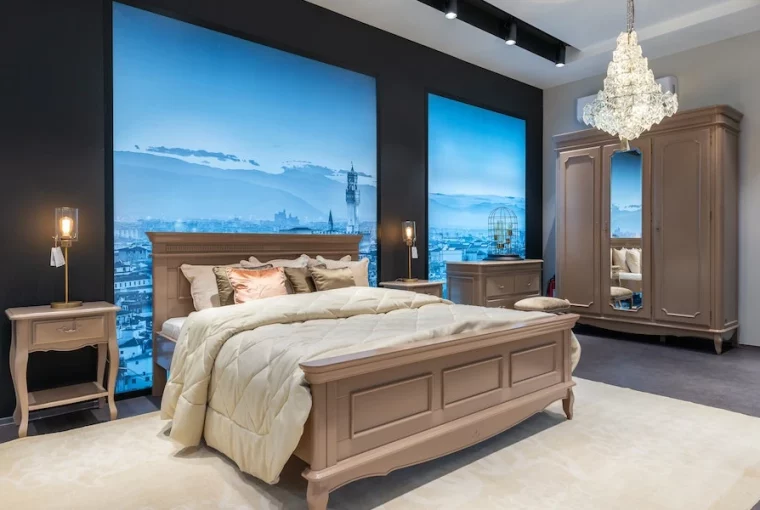Nowadays it is not a secret that the ambiance that surrounds you has a great impact on your mood, your thoughts, and even your personality. Beginning from the small detail like the lampshade shape and ending with the overall home’s style- you use and perceive it on the daily basis.
If the handle on the door isn’t comfortable in usage- your disposition every time you use it will worsen. If the color palette of your bedroom is overstimulating and too energetic it will influence your sleeping and resting time quality. But before paying attention to such details we can think about some common rules of a harmonious for your mental health interior design.
Is it enough to buy beautiful furniture to get a harmonious interior? Not always, right? How to arrange interior design in a healthy way?We already talked about your workplace healthy arrangment, but what about your home? Let’s see what you can do.
If you will buy random elements, then you will definitely get just a set of items. After all, pieces of furniture in the interior should be interconnected. There is no difficulty here, there are only six common principles for planning your design. In order to beautifully and competently furnish the living room, bedroom, and kitchen, it is first better to practice with skill, for this you can download free programs for interior planning, which can be easily found on the Internet.
1. Symmetry
The main and, at first glance, the simplest technique. Usually, it is loved for its naturalness. Indeed, in nature, much is symmetrical – take at least the man himself. So such an interior gives the impression of a balanced and harmonious.
In a symmetrical interior, objects are at the same distance relative to the selected axis. In other words, the two halves of the room mirror each other. Moreover, symmetry can be expressed not only in furniture but also in the arrangement of windows and doors. It is not necessary to buy furniture in identical paired sets. It is better to achieve symmetry with the help of similar shapes and colors of furniture and objects.
2. Asymmetry
The complete opposite of symmetry is asymmetry. Here, too, there is a central axis – the center of the composition – only on both sides of it are not similar, but different objects, but equally significant in the interior and equally eye-catching. Even unlike each other, they will create a compositional balance.
It is believed that, unlike the symmetrical interior, the asymmetric one looks more informal.
Therefore, it is perfect for modern apartments.
If the asymmetric arrangement of furniture seems too complicated for you, create a generally symmetrical interior, and experiment with asymmetry through decor and accessories.
3. Dynamics
Dynamic is a more advanced way of arranging everything in a room in an asymmetrical manner. The dynamic layout is characterized by a large amount of free space, geometric shapes, and vertical lines. Be sure to pay attention to the floor coverings: the diagonal layout of the parquet or tiles will add dynamics to the interior. Contrasting hues in finishes and décor will contribute to this interior.
4. Statics
The predominance of linear elements (pronounced verticals and horizontals) is a feature of a static interior. Most often, a symmetrical interior in a classic style turns out to be static.
For a static design project, choose massive sofas with strong legs, deep armchairs, and low chests of drawers and cabinets. To prevent the interior from looking boring, add bright colors through decor or furniture upholstery.
5. Rhythm
The rhythm in the interior is set by repetition. This can be furniture (for example, chairs in the dining room), accessories (photos or paintings hung on the wall in the living room), lamps, and large and small architectural design elements (columns, arches, repeating stucco patterns in the hall). Rhythm can be either vertical or horizontal.
Designers and decorators often use an interesting technique – they interrupt the rhythm. For example, a model of a different color is added to a row of identical chairs.
6. Dominant
It is customary to call the dominant object in the room – its visual center. It is the first object that catches the eye and the rest of the composition is built around it. It can be a fireplace, a bar made of bright artificial stone, or a group of colored chairs around a dining table. The dominant can be color or scale. And it should be connected with other items in the interior. For example, if you chose a blue oversized armchair, it would be right to support the upholstery color in the wall decor.
7. Zoning
A very important stage that will allow you to properly build the most convenient and comfortable space. And your comfort directly changes the way you feel yourself in the space. There are several ways of zoning:
- Finishing materials with different textures or colors.
- Lighting, the so-called local light.
- Changing the level of the ceiling or floor. In our opinion, the optimal and modern option, because. it is not intrusive and does not interfere with the architecture of the space, complementing it with the necessary geometry. Also, using zoning, you can simultaneously close the issue with storage systems (for example, by using a podium)
- With furniture. The easiest way, but requires careful attention because the arrangement of the furniture should take into account the ergonomics of the room and comfort.
8. Color
You can find just a cosmic amount of information on the Internet about the effect of color on a person. But I would like to pay attention not only to color. Yes, of course, some colors evoke certain emotions in us and all our favorite colors are different.
The first way – is to choose the color yourself. As a rule, when choosing a color, many are guided by what they like. It can be a favorite color or a color that was spied on in a finished interior somewhere on the Internet. This is not quite the right way.
The second way – is to choose a color based on its effect on a person. Do you feel the difference? By choosing the second option, we can “program” ourselves for a certain mood, in the morning, evening, or afternoon. Consider how the interior and the room will look, depending on the geographical location and time of day, and year.




